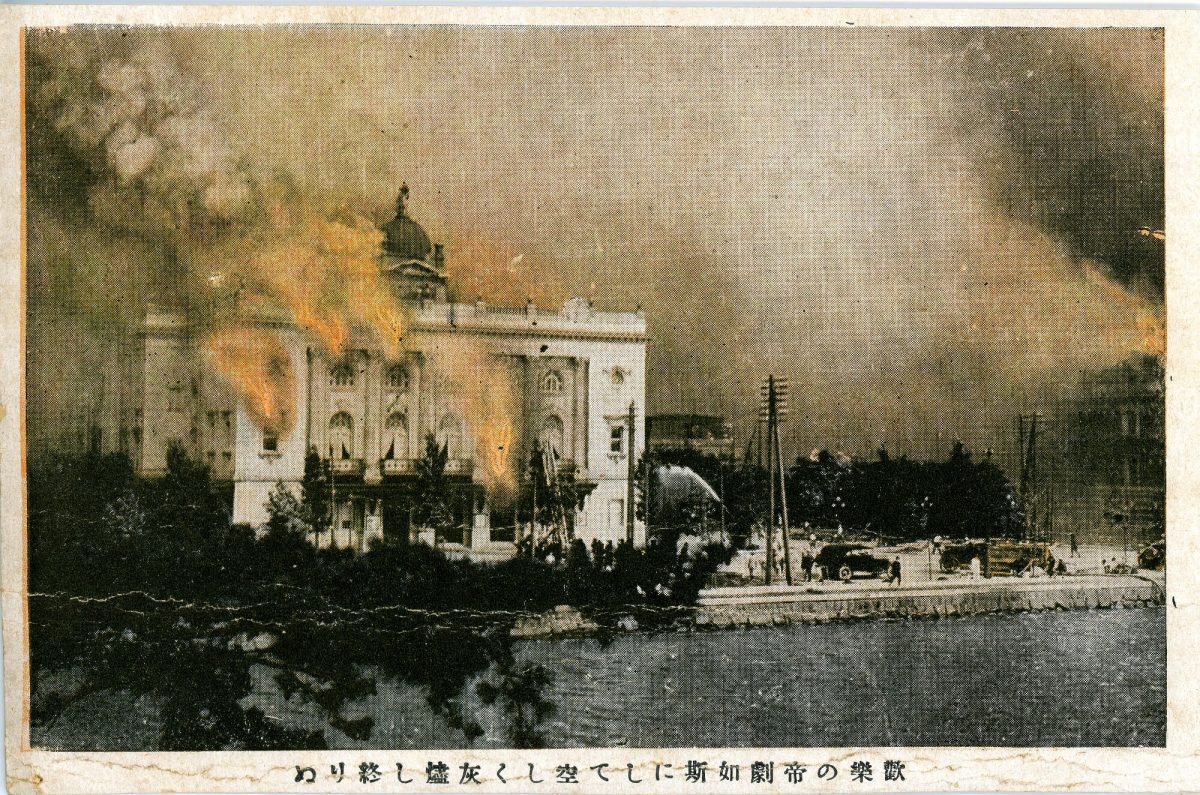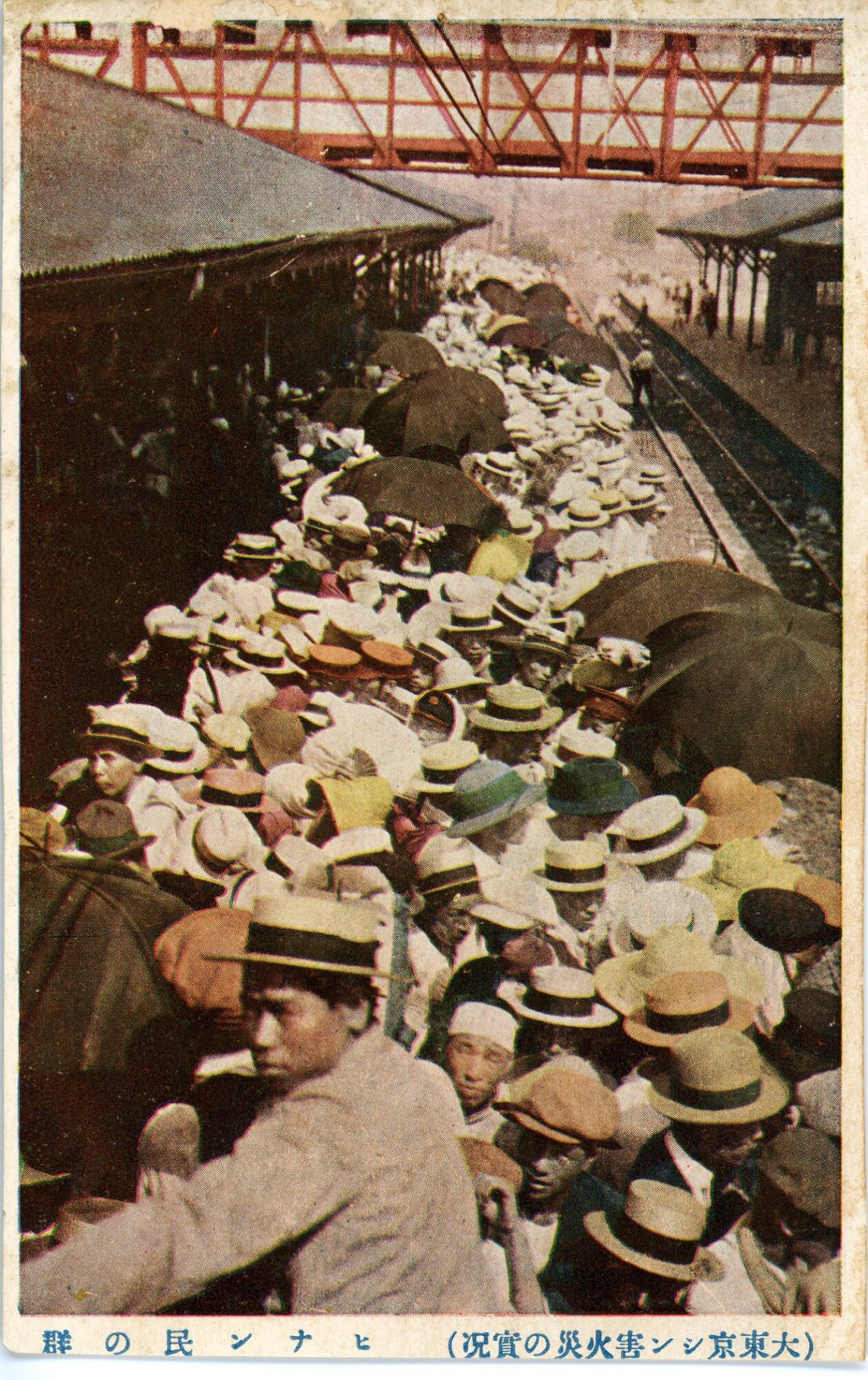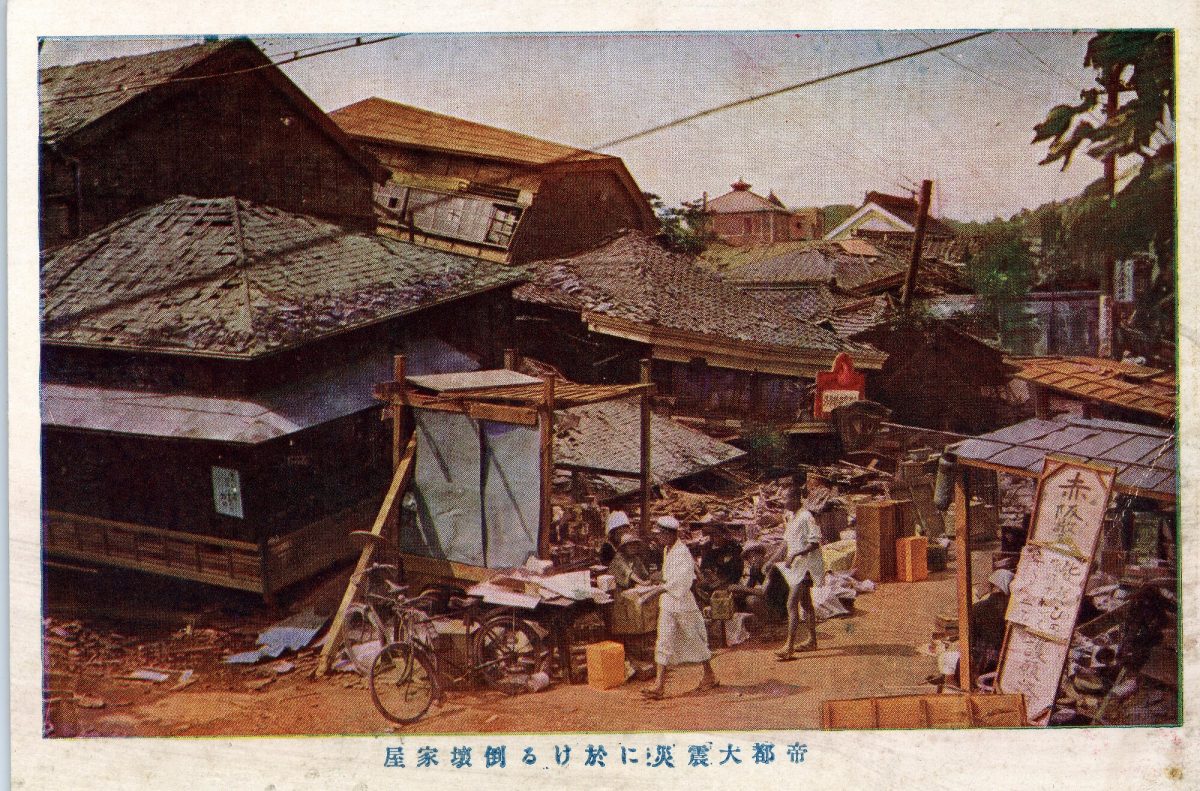It was the first of September 1923 and a couple of minutes before noon. Six miles beneath Salami Bay, about 30 miles south of Tokyo a 60 by 60 mile piece of the Philippine oceanic plate split and forced itself against the Eurasian continental plate. A massive amount of tectonic energy was released and on the surface people stopped “transfixed by the ‘sound of uneasily thunder'”. The initial terrible earthquake was then followed by a huge 12 metre tsunami and if this wasn’t awful enough fires went on to sweep through the wooden houses of Yokohama and Tokyo destroying everything and everyone in their path. It was estimated that 140,000 people died in the dreadful Kantō Earthquake of 1923. A number that included almost 45,000 people who had tried to protect themselves near Tokyo’s Sumida River but who were all burnt alive by an awful 100m tornado of fire known as a “dragon twist”. It destroyed almost everything with only a few hundred people surviving.
The SS Dongola‘s captain reported that, while he was anchored in Yokohama’s inner harbour:
At 11.55 a.m. the ship commenced to tremble and vibrate violently and on looking towards the shore it was seen that a terrible earthquake was taking place, buildings were collapsing in all directions and in a few minutes nothing could be seen for clouds of dust. When these cleared away fire could be seen starting in many directions and in half an hour the whole city was in flames.
In less than three days half of Japan’s capital had become nothing less than a grim and dark corpse-strewn wilderness of rubble. It was said that many people died when their feet became stuck on melting tarmac. The appalling disaster caused a lasting shock to Japan that went on to whip up nationalist and racist intense emotions. Ethnic Koreans were massacred after the earthquake following false rumours that they were committing arson and robbery and even poisoning the water. It’s estimated that as many as 10,000 Koreans were murdered. The earthquake and its subsequent ramifications haven been held responsible for encouraging right-wing elements of society just as the country was embracing Western-style democracy. Just eighteen years later Japan entered World War II…
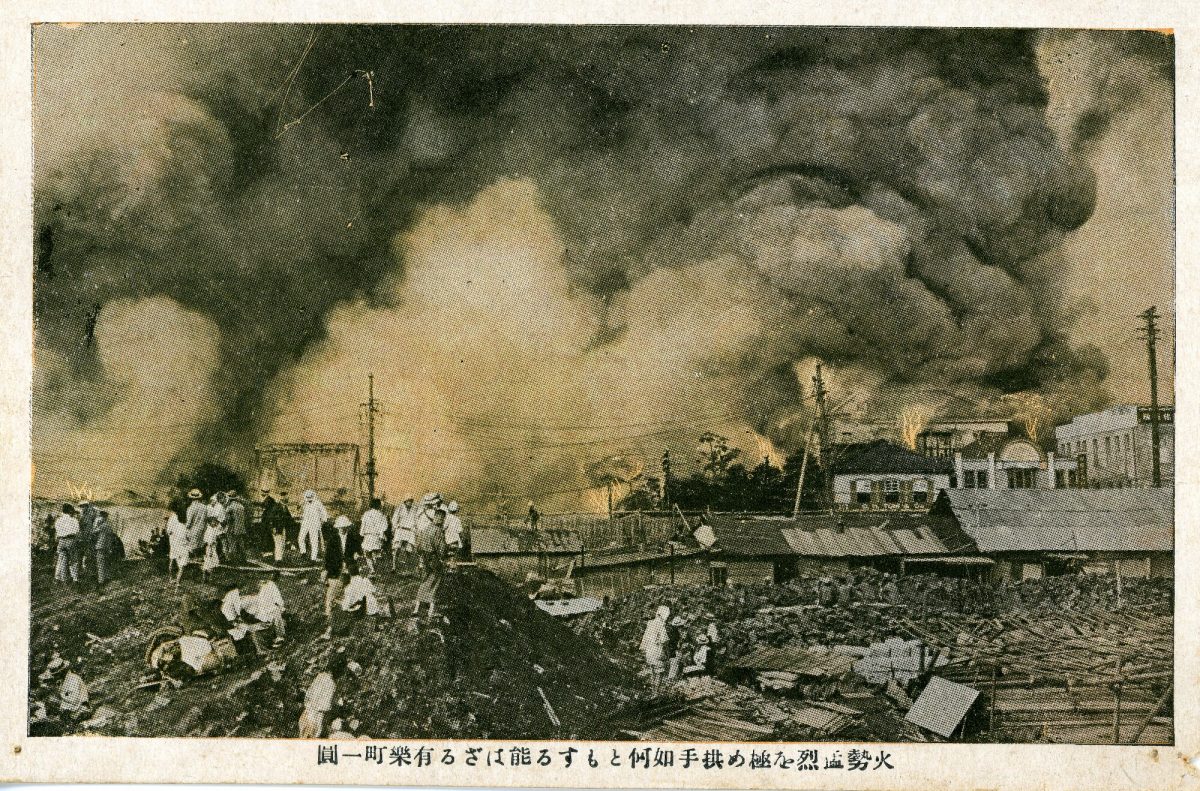
The Ferocious Fire in Yurakucho Can’t Be Extinguished Despite Extreme Efforts 1923
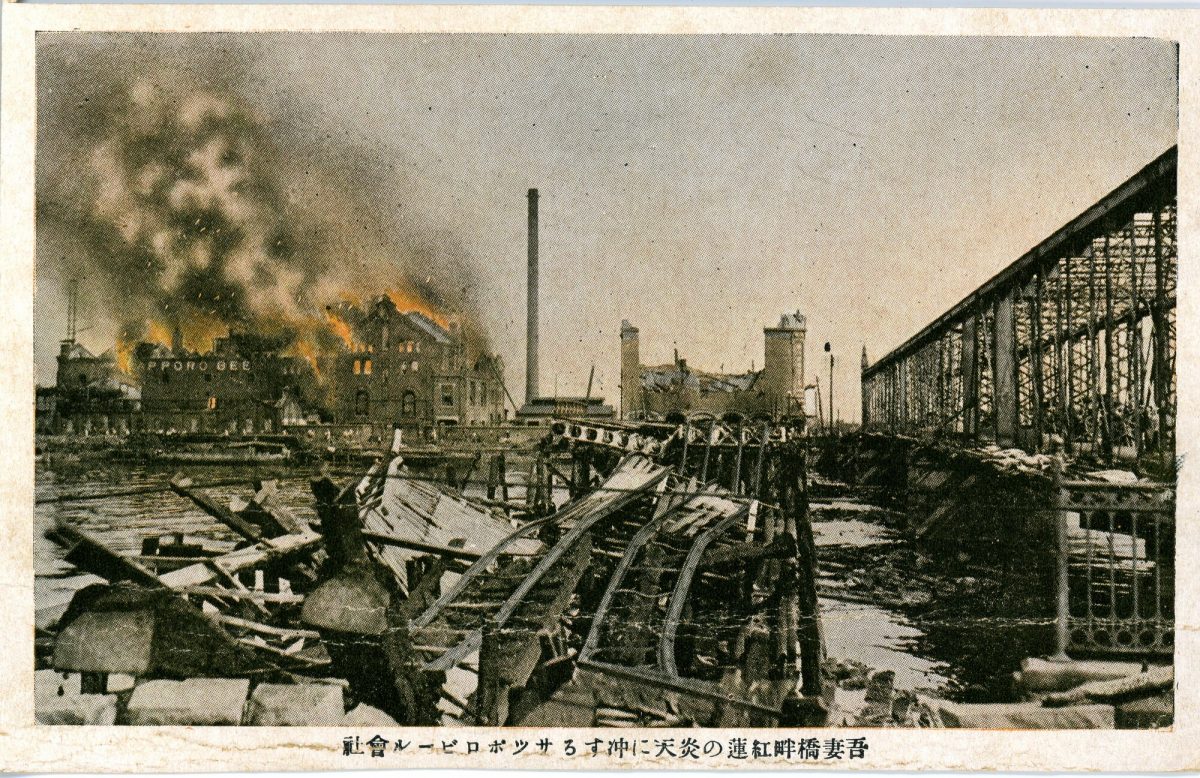
The Sapporo Beer Company Engulfed in Crimson Heat on Bank of Azuma Bridge

Great Kantō Earthquake- The Wreckage of Kyobashi and Shinbashi Areas 1923
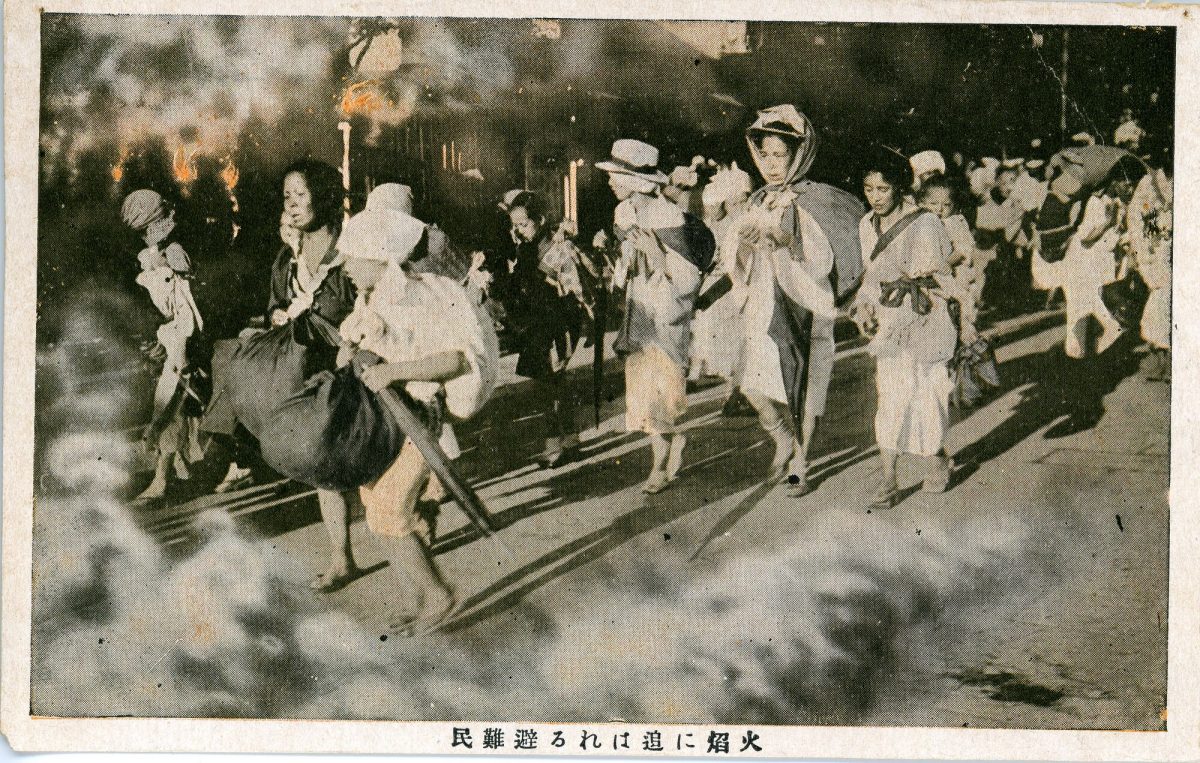
Refugees Fleeing the Fire, 1923
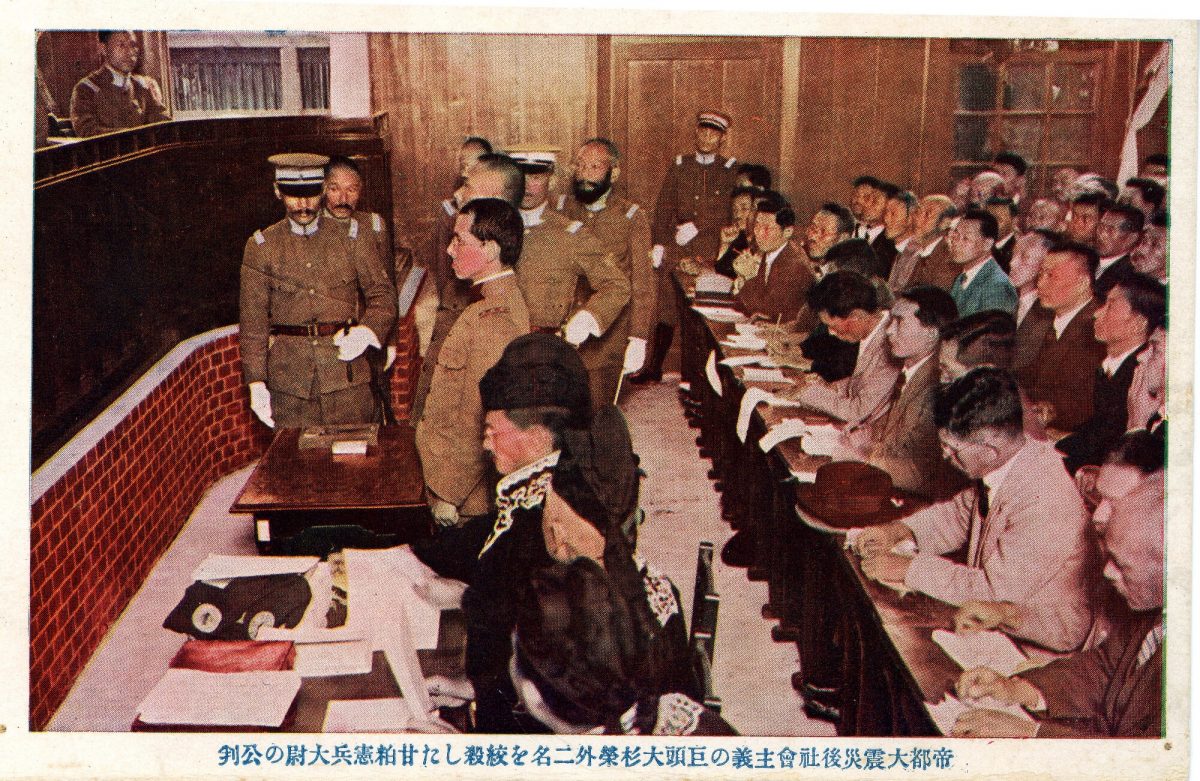
The Trial of Military Police Captain Amakasu who Garroted Socialist Leader Osugi Sakae and Two Others after Great Tokyo Earthquake 1923
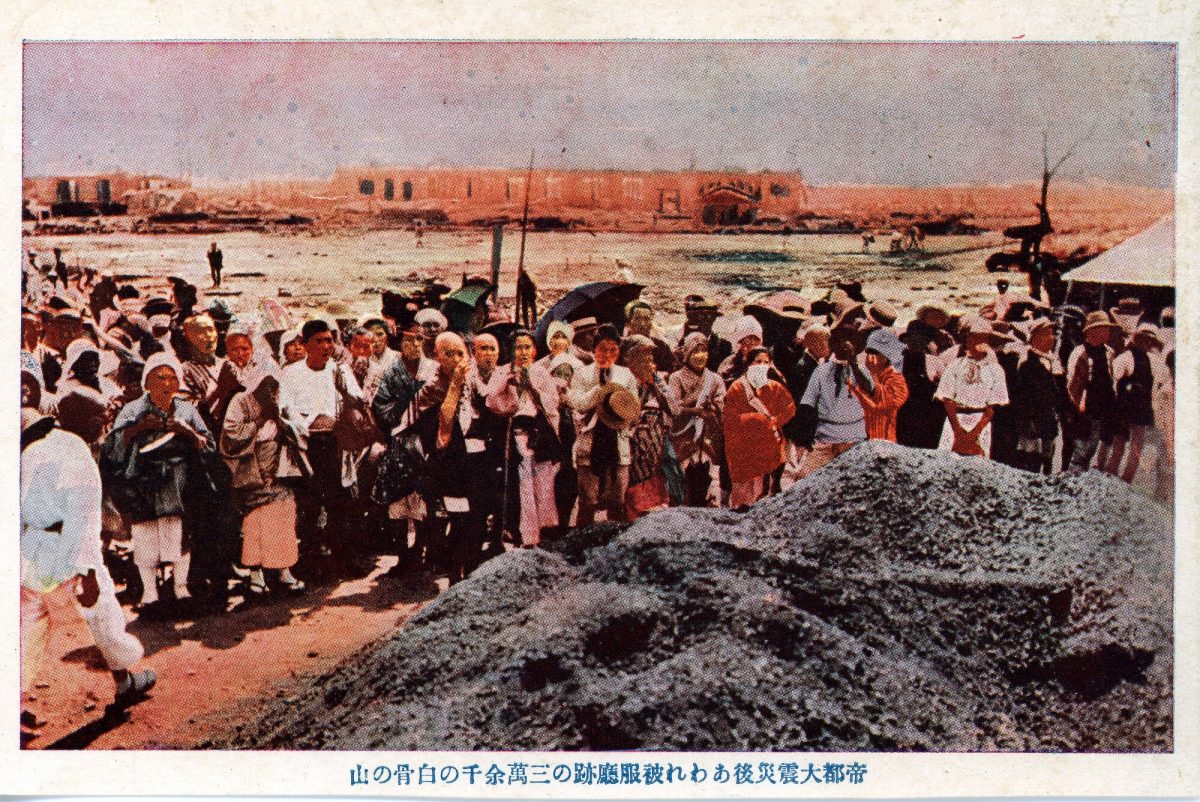
Mourning the Loss of 31,000 People at a Mountain of Cremated Remains] 1923
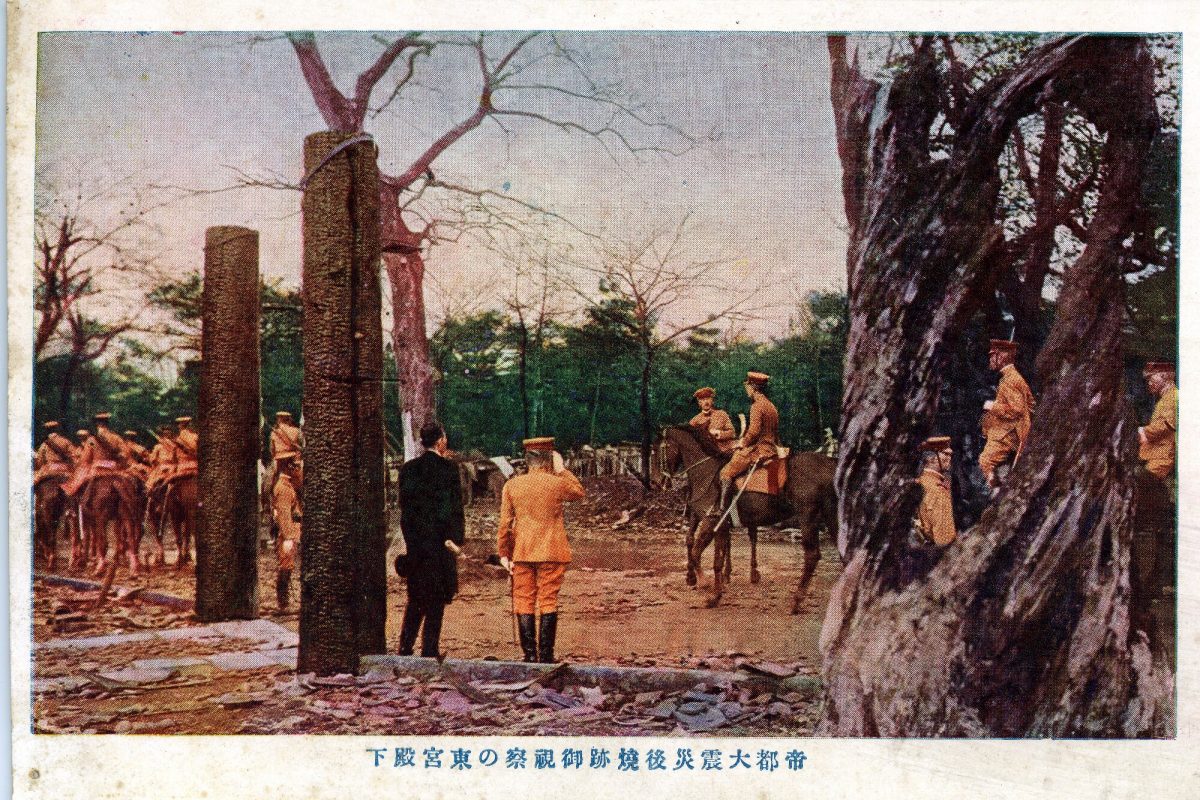
‘Choking back silent tears’ the Imperial Highness Inspects the Wreckage of the Great Tokyo Earthquake 1923
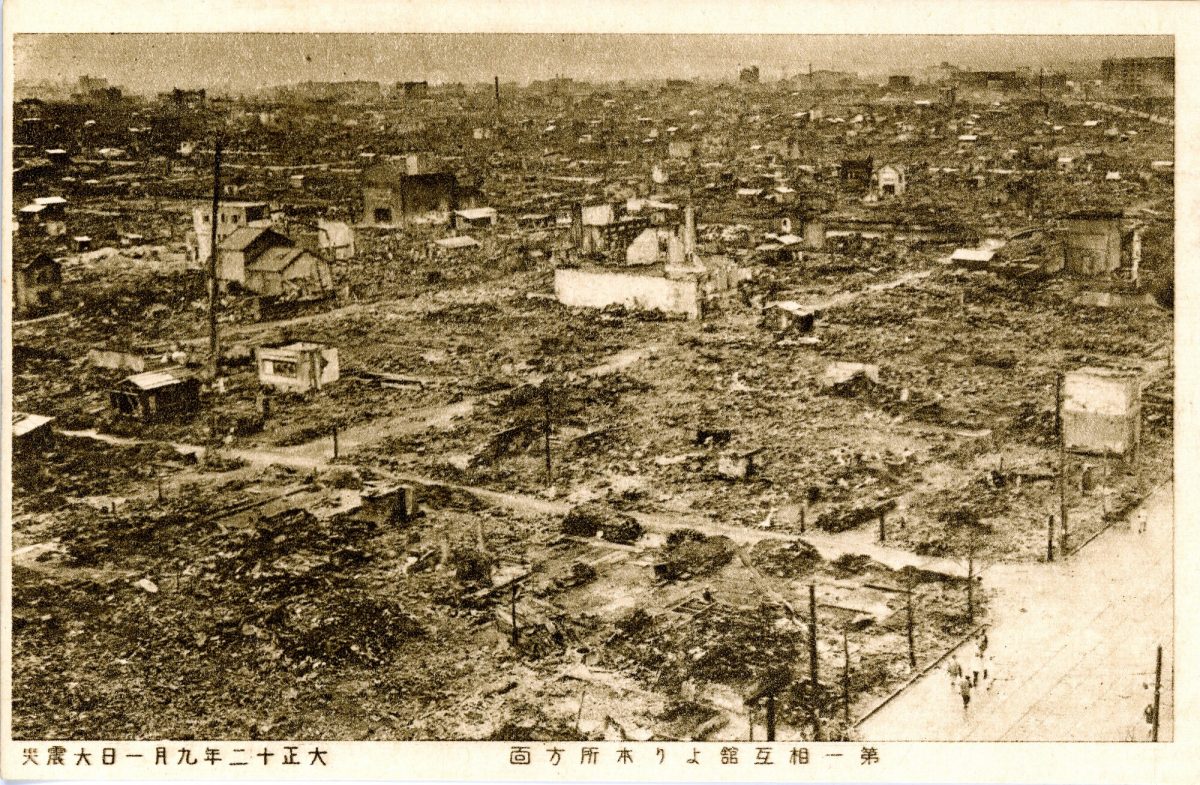
Honjo Area from the Dai-ichi Mutual Life Insurance Company Building 1923
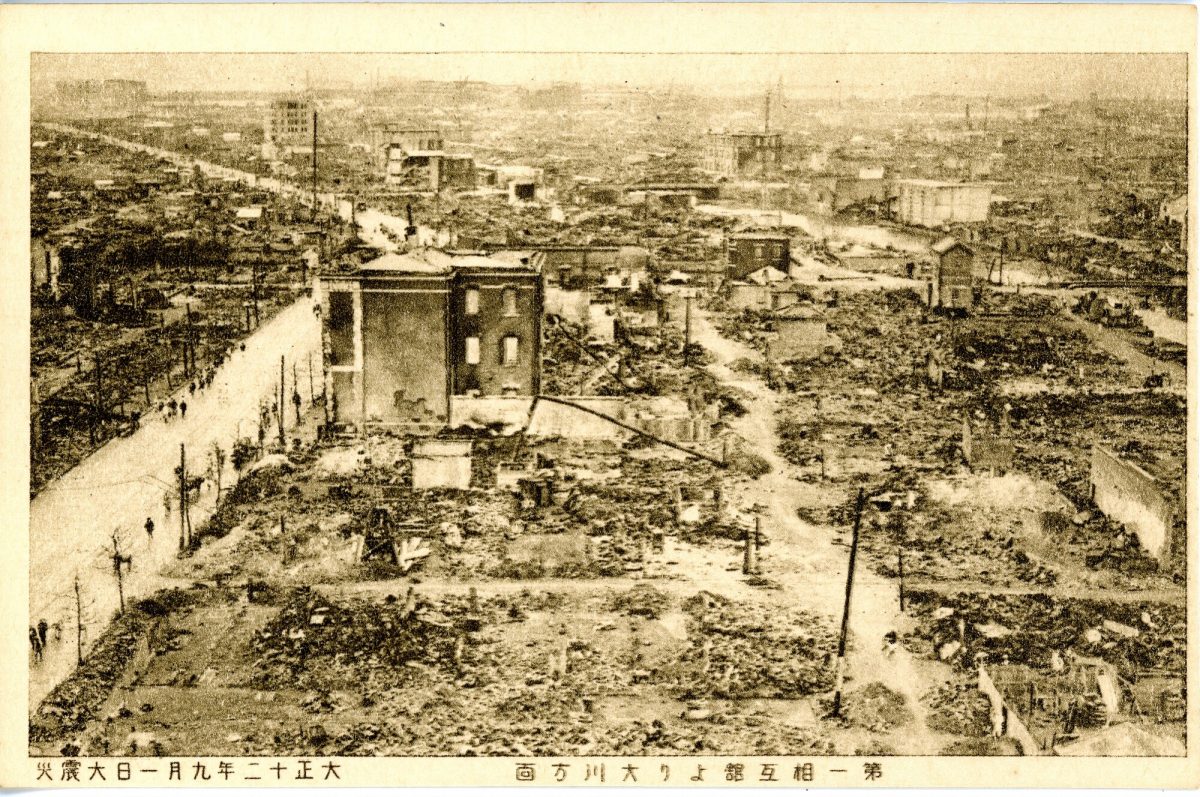
Ogawa Area from the Roof of the Dai-ichi Mutual Life Insurance Company Building 1923
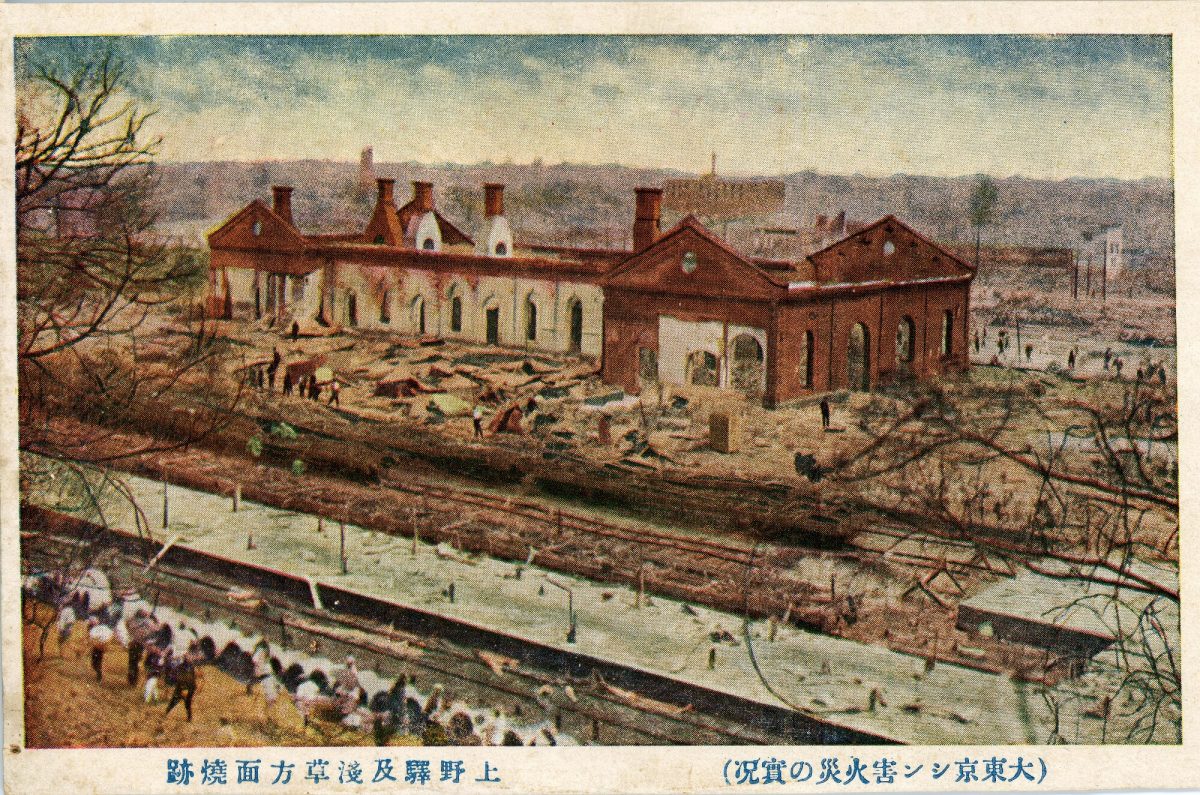
Great Kantō Earthquake- The Wreckage of the Ueno Station and Asakusa Area
These postcards are all from the Kyoto University Rare Materials Digital Archive
Would you like to support Flashbak?
Please consider making a donation to our site. We don't want to rely on ads to bring you the best of visual culture. You can also support us by signing up to our Mailing List. And you can also follow us on Facebook, Instagram and Twitter. For great art and culture delivered to your door, visit our shop.
